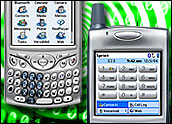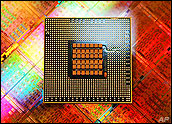
Some laser printers release minute particles into the air that can become lodged into the deepest parts of the lung, possibly causing serious illnesses, according to scientists studying indoor air pollutants at offices.
The findings were reported in a study published in the American Chemical Society’s Environmental Science & Technology (ES&T) journal. The research found one of the printers released dangerous chemical mist at a rate on par with particle emissions from cigarette smoking.
The research was conducted by Lidia Morawska and colleagues in Australia, who found 17 out of 62 printers in the study were what they classified as “high particle emitters.” The researchers believe the airborne particles came from the printer toner, a very fine powder.
Mixed Results
Not all of the printers studied by the team turned out to be dangerous. The researchers found that 37 of the 62 units released no particles. Six printers were found to release low levels of particles and two were classified as releasing medium amounts.
The units tested were popular models sold worldwide by Canon, HP, Ricoh and Toshiba, said the report.
An American Chemical Society statement on the study notes that most of the particles detected by the researchers were submicrometer or “ultrafine,” meaning they are “easily inhaled into the smallest passageways of the lungs” where they could cause serious illnesses.
Small Amounts Can Be Dangerous
“The health effects from inhaled ultrafine particles depend on particle composition, but the results can range from respiratory irritation to more severe illnesses, such as cardiovascular problems or cancer,” says the report.
“Even very small concentrations can be related to health hazards. Where the concentrations are significantly elevated means there is potentially a considerable hazard,” Morawska notes in the report.
The ACS said previous studies focused on emissions of volatile organic compounds, ozone and toner particles from office printers and copiers but the research “left broad gaps in scientific understanding of particle emissions and airborne concentrations of particles.”
Accidental Discovery
The researchers stumbled upon the discovery “by chance” while studying the effectiveness of office ventilation systems. “We soon realized that we were seeing air pollution originating indoors, from laser printers,” says Morawska.
The scientists found airborne particle levels increased fivefold during work hours when printers were being used. They also found the emissions to be greatest when new toner cartridges were installed and when the units were printing graphics and images.
Impact Could Be Severe
The report could have a significant effect on the printer industry, said Rob Enderle, principal analyst at Enderle Group.
“If this story gets wide coverage, which is possible given overall health concerns at the moment, it could spell the end for laser printers in general because buyers likely won’t be able to be sure which ones are hazardous and which ones are not,” Enderle told TechNewsWorld.
Laser printers “have been in decline anyway in small business and home markets,” as people replace them with cheaper inkjet printers, he added. “Inkjet has moved well up into competitive positions for departmental printers while laser has held on for the large-scale, high-volume stuff,” noted Enderle.
Connecting the Dots
The killer blow to the laser printer industry might come if research links toner particle inhalation to sickness, Enderle said.
“Typically what happens now, if the study is validated internationally, is that occupational safety guidelines step in and the hazard must be posted at the printer,” he commented. “If illnesses can tracked to this, the vendors who built the product now become liable for those illnesses, along with the companies who have purchased them, increasing significantly the risk and insurance costs associated with the printers.”
Call for Regulations
The researchers said government officials should consider regulating laser printer particle emissions. “By all means, this is an important indoor source of pollution,” Morawska said. “There should be regulations.”
In other industries where a technology has been dealt a blow to public image, the competing vendors often get together to ensure the public that changes are being made and all is well. Enderle questioned whether that can happen in this case.
“The printer industry isn’t known for being particularly cooperative between vendors,” he concluded. “If this study is validated, this could actually mean the end of the laser printer in a very short period of time.”





















































